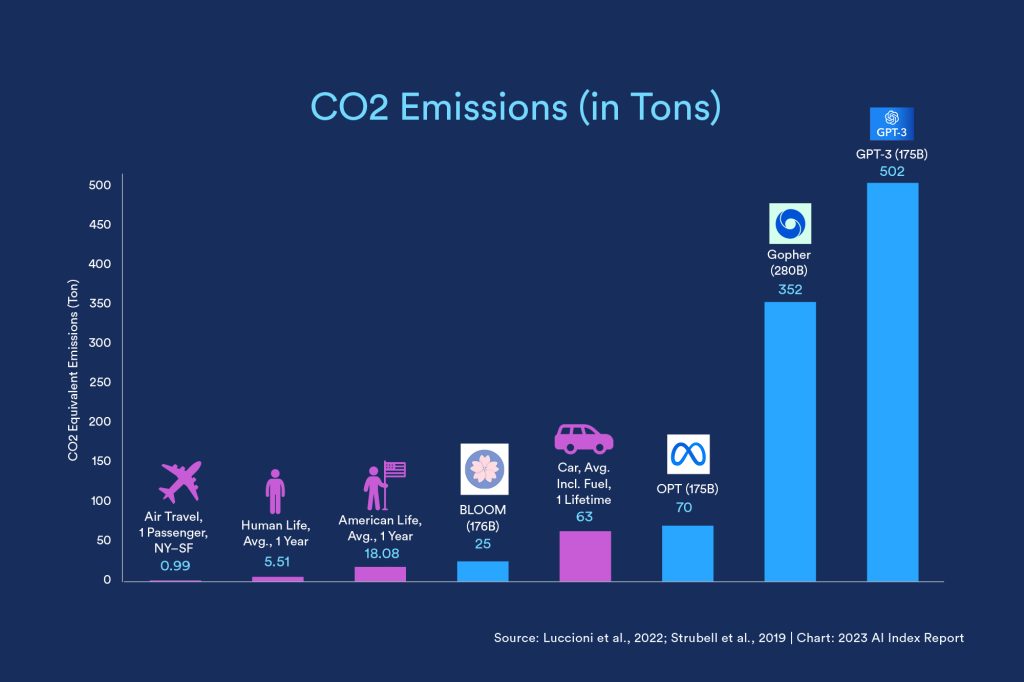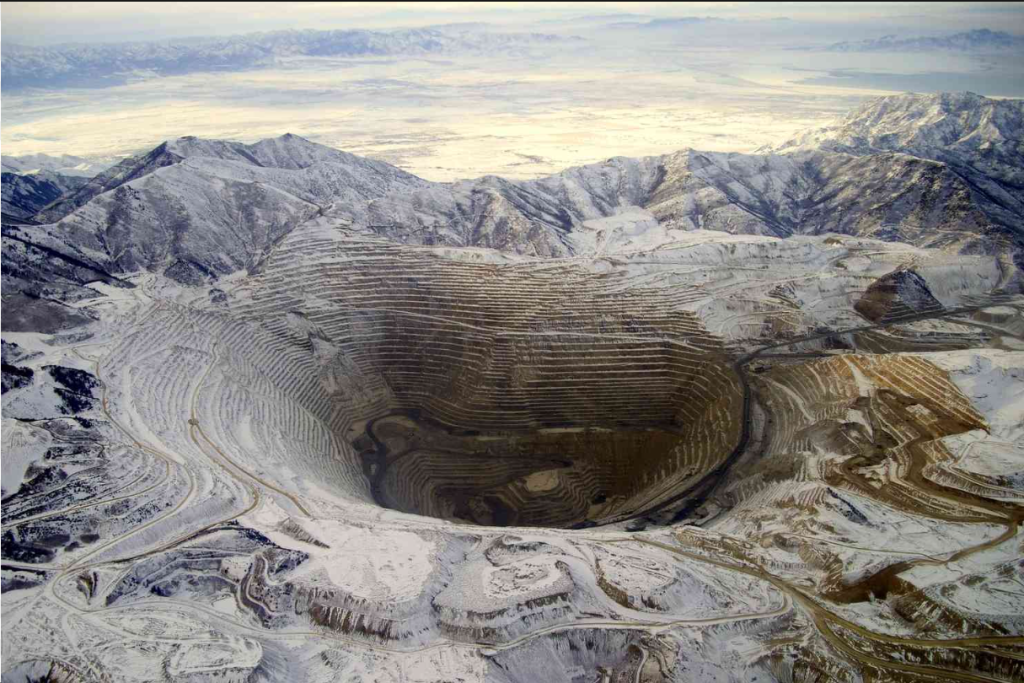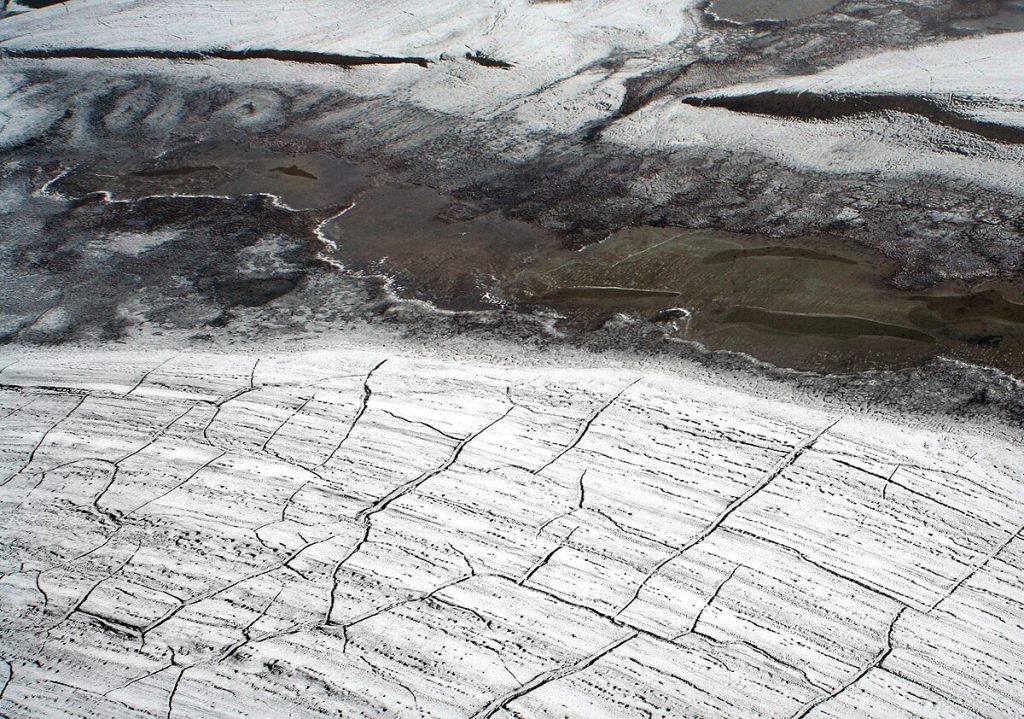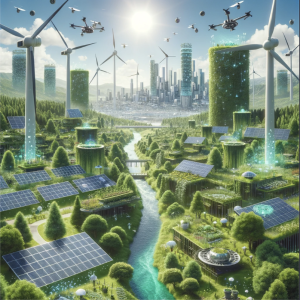The fast-growing industry of AI has taken center stage in today’s society. Models such as Google’s search engines, Netflix’s recommendation system, and chatGPT have become indispensable in our everyday lives. Yet, despite the allure of these models, have we overlooked the shadows they cast on our planet? Are we steering AI toward an environmental disaster or can we deploy AI and still turn the wheel toward an environmentally stable future?

AI’s carbon trail
One significant hidden cost of AI is projected in the massive carbon footprint these remarkable systems leave on our planet. Developing and deploying AI systems such as ChatGPT, BERT, and AlphaGO all rely on the necessary computational power and storage capacity powered by big data centers. These energy-intensive centers often derive their energy from fossil fuels generating substantial carbon emissions. Accounting for 2.5 to 3.7 percent of the global greenhouse gas emissions data centers significantly contribute to the already existing environmental challenges.

Researchers by MIT Technology Review report that training one AI model can produce 626,000 pounds of CO2, an emission equivalent to 5 times the lifetime of an average passenger car. With the rapid technological advancements systems become more complex, and even more energy is needed to train and deploy the models. OpenAI research reports that every 3.4 months, the computation power to train models has doubled. With these prospects, it is expected that by 2040, the ICT industry will account for 14% of global emissions.
The excessive thirst of AI
A lesser-known environmental cost is the water footprint of AI. As the data centers operate around the clock a cooling process is required resulting in a significant waste of fresh water every second. A study by Pengfei et al. reports that training of GPT-3 in data centers consumes a staggering 700.000 liters of freshwater. With just one conversation with chatGPT, you are wasting a bottle of fresh water. This leaves a massive water footprint as we consider the billions of users that visit chatGPT daily. With today’s increasing demand for AI, a water withdrawal ranging from 4.2 to 6.6 billion cubic meters is anticipated by the end of 2027. With the growing advancements as we see them now the thirst of AI grows uncontrollably, intensifying the shortage of one of the most important resources, fresh water.

Environmental toll of mineral mining
High-performance hardware is the backbone of the top-performing data centers AI relies on. The pursuit of swifter models increases the demand for hardware like CPUs. The particular components integrated into the data centers require the mining of heavy and precious metals. Substantial environmental effects are observed in for instance climate change, deforestation, and pollution. When minerals are extracted from the earth they release harmful chemicals and toxic waste into nearby streams and rivers, contaminating the water. As for deforestation, big areas of forests are cleared to create space for the extraction of minerals, again increasing the amount of CO2 in the atmosphere. As our demand for these hardware grows can we keep turning a blind eye to the environmental cost of these processes?

AI as a tool for sustainability
It is important that, even though we have our concerns, AI does present a unique possibility to restore the ecosystems on our planet. As Saleh ElHattab, founder of Gravity Climate, has mentioned in an interview with ABC News, AI systems excel at estimating relationships. This gives them an advantage when processing large amounts of data. These tools could be beneficial to an environmentally sustainable future, and some of them are already been worked on.
An example of an AI tool that is already helping our environment can be found in the World Environment Situation Room (WESR), launched in 2022 by the United Nations Environment Programme (UNEP). The WESR’s systems congregate present global data collected from sensor data into a comprehensible map that reflects changes close to real-time. The system has data on air quality, pollution and waste, and biodiversity loss, among many others. These systems allow the calculation of predictions, enabling different groups to prepare for coming environmental changes; and hopefully in the future, to prevent the loss at large of our ecosystems.
Another upcoming project from UNEP is the International Methane Emissions Observatory (IMEO). The system utilizes empirically verified methane emissions to map global emissions, assisting in the reduction of such emissions as it “leverages AI to strategically interconnect this data with action”. The transparency of this system and the collaborative aspect of the information could be its greatest strength. The IMEO may enable the creation of more accurate data-derived policies, with open-source material to support them, possibly leading to positive consequences for the environment.

Among other examples of projects that intend to leverage AI is the team at Woodwell Climate Research Center, which is working on an open-access tool to track permafrost thaw in real-time. One of the greatest challenges is that permafrost is inherently underground, meaning that it cannot be viewed directly by satellites. The team aims to utilize tools similar to face recognition to discern between the changes in the environment that may relate to permafrost displacement. Due to the enormous area needed to cover, the expense and time required of doing this labor manually would greatly surpass that of a trained AI.
From local scale to global and immediate, AI is already taking part in the effort to revert the damage done to our environment. Its ability to process immense data sets, find relations, and propose predictions that would take unscalable human labor gives it a unique place among our tools. It is undeniable that for certain applications AI can assist, or complete the task, in a more efficient manner.
Future applications
The discussion surrounding the future of AI applications to help the environment is a little more complex. The Johns Hopkins University published an article by Megan Mastrola where several possible applications of AI are presented. From tracking artificial satellites to autonomous robots for exploring the oceans or the arctic poles when the conditions are too harsh for ships. Publications like this show an optimistic view of AI, and although the applications here seem a good fit for a trained AI model, in my opinion, the article fails to highlight that these are possibilities, not products. It is important to differentiate current technologies, in-progress projects, and ideas.
Jack Cornell, director of Sustainable Supply for the United Soybean Board, has highlighted some very interesting applications for the agriculture industry. Different from the current environmental overseeing technology, Cornell suggests the use of AI to analyze crop yield to adjust the use of fertilizers. This would reduce the overuse of the product and focus it solely where it is needed. Meanwhile, UN News has highlighted how AI could “optimize [power] grids and increase the efficiency of renewable sources”; as well as decrease the carbon emission of fast fashion and fast food industries, two very large carbon contributors.
This is where the argument between the future beneficial effects of AI in environmental sustainability becomes more ambiguous. The proposed projects fit the description of an AI assistant very well: large amounts of data that need to be processed to find relations to ultimately output predictions. Similarly, the AI’s ability to be deployed at a large scale is incredibly powerful. If these systems come to life, they could be adopted by thousands much more rapidly than other technologies. However, regardless of the almost certain benefit for the environment, the biggest question remains to be: Will these technologies actually take place? Training AI models require incredibly large amounts of data and energy to power the training. Will the corresponding governmental bodies, companies, and others facilitate the existence of these tools? Or will they remain simply an idea? It would not be the first time that humans have a solution right in front of them, yet refuse to help one another.
Final thoughts
Although the challenges of AI are many, not all it produces is negative. The carbon emission and use of water is one of our largest concerns. The energy required to produce the equipment and train the AI models is only expected to continue to rise exponentially due to the growing complexity of the training. The highly competitive society in which AI is being developed is an important contributor to the scene. Moreover, we feel compelled to mention that here we have only tackled the environmental effects, and we do not discuss the negative externalities that surround AI and its development. However, for environmental sustainability there is a glimpse of hope in what AI does, and may do, for our planet.
We conclude our passage with a note of warning, not because we cannot appreciate the good AI contributes to the environment, but because of a seemingly imminent overload to our environment that needs to be addressed without excuse. AI will be of little use in a planet that humans, and other living beings, cannot inhabit.


